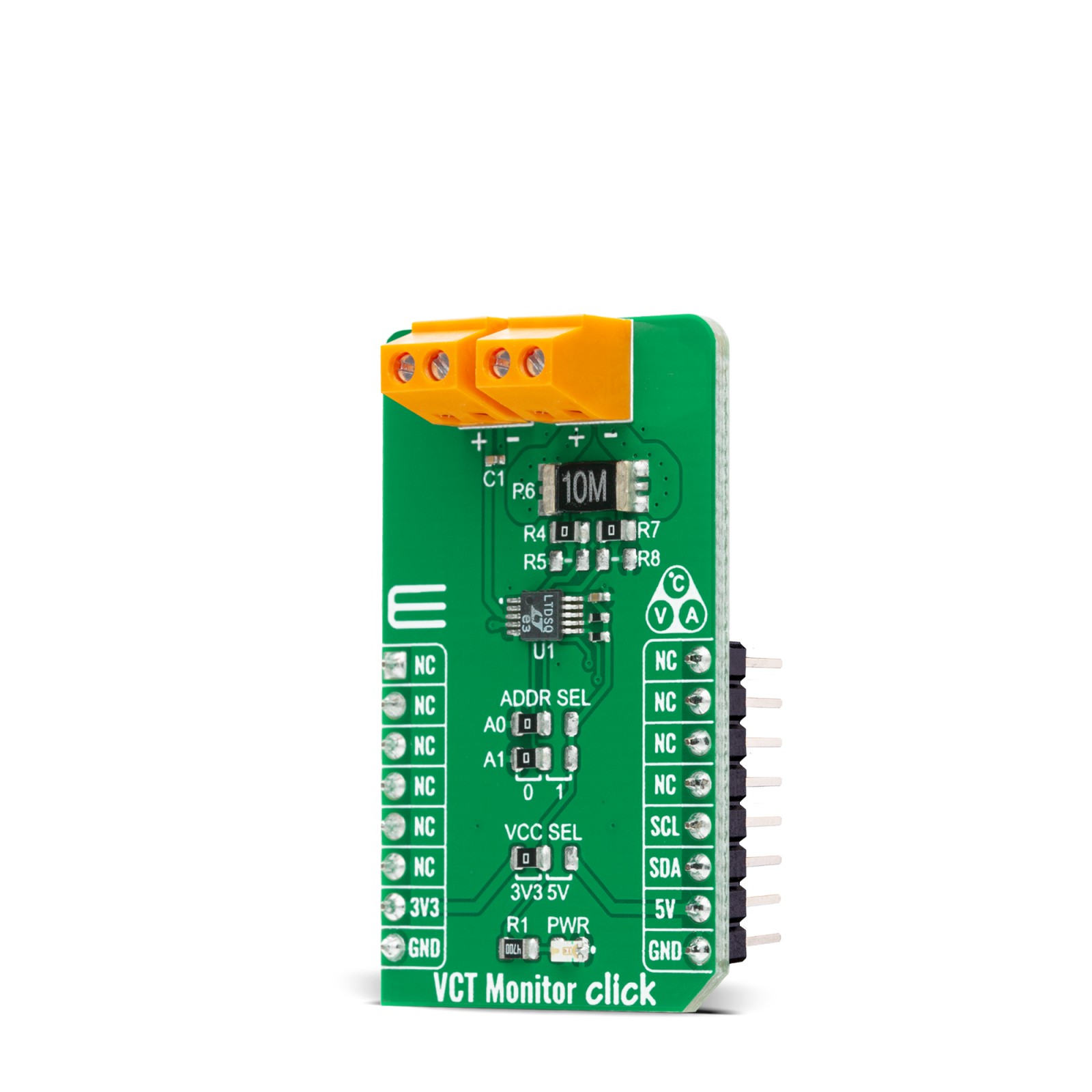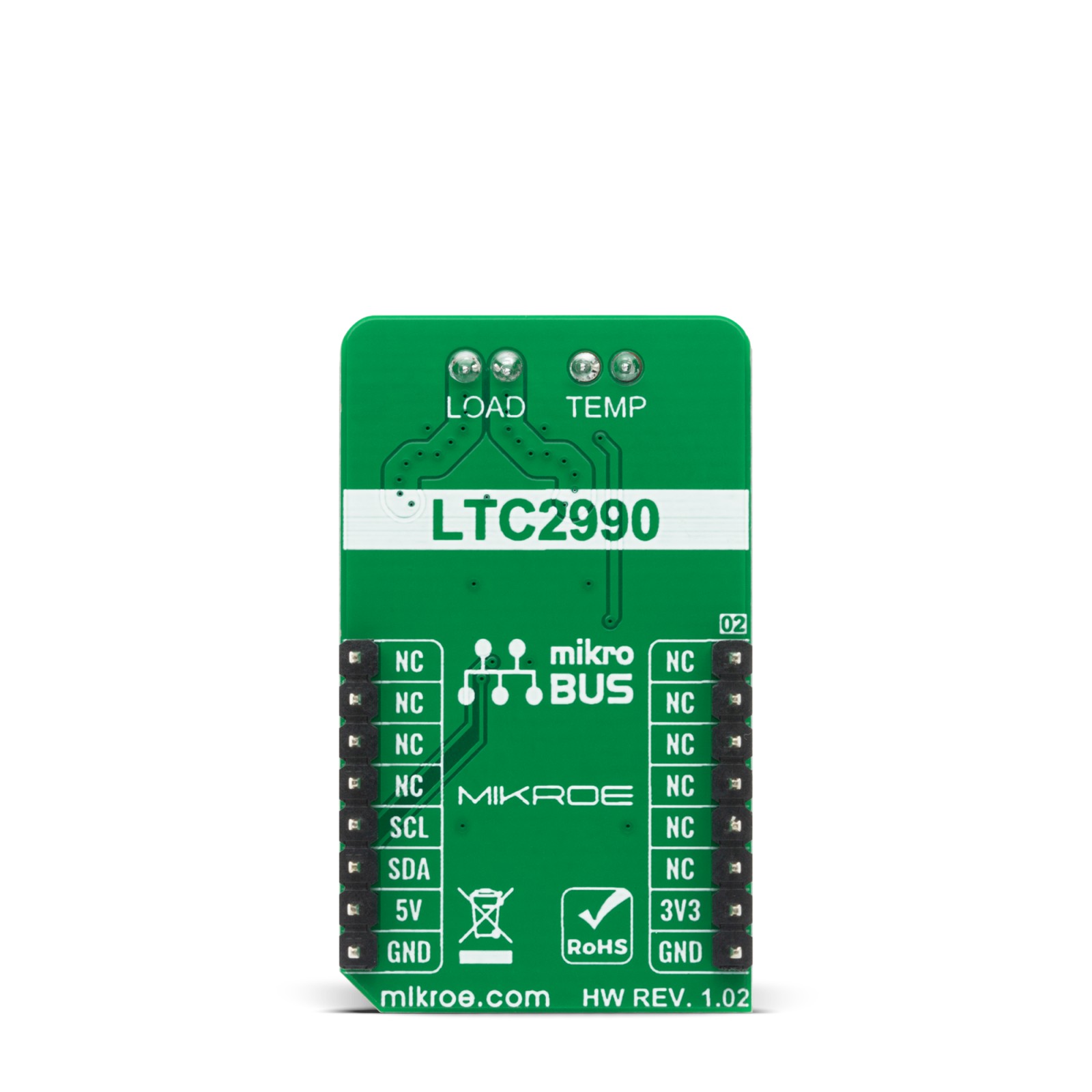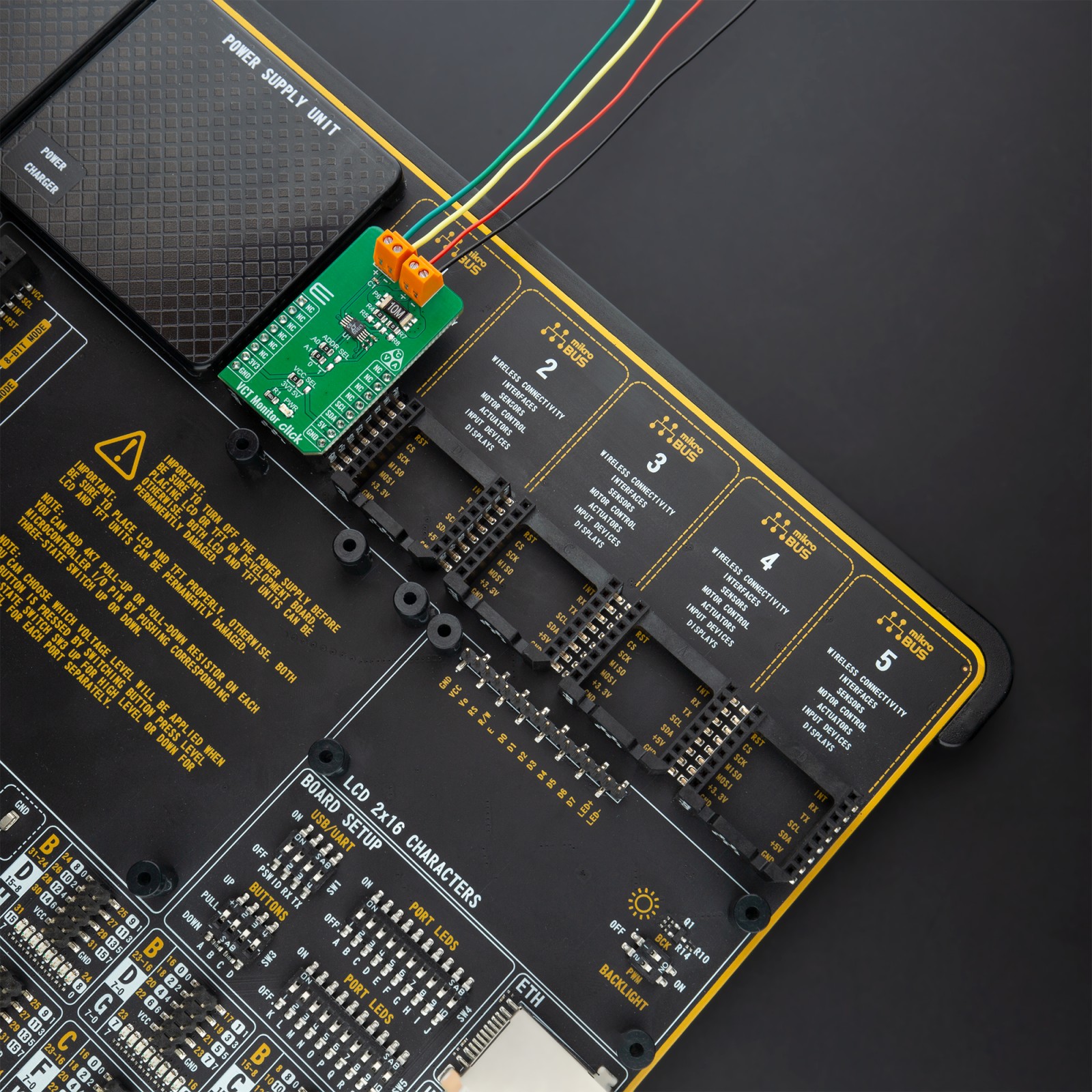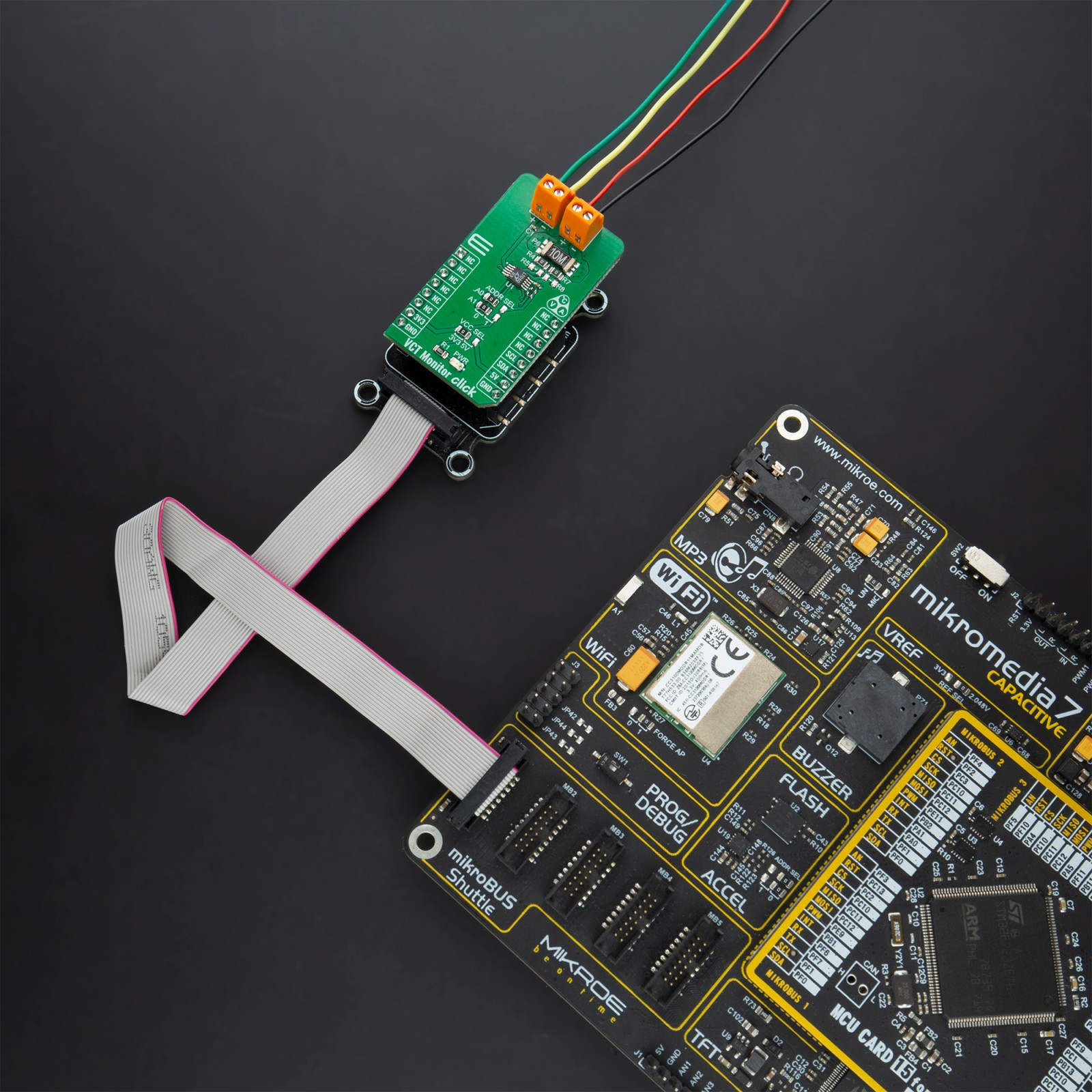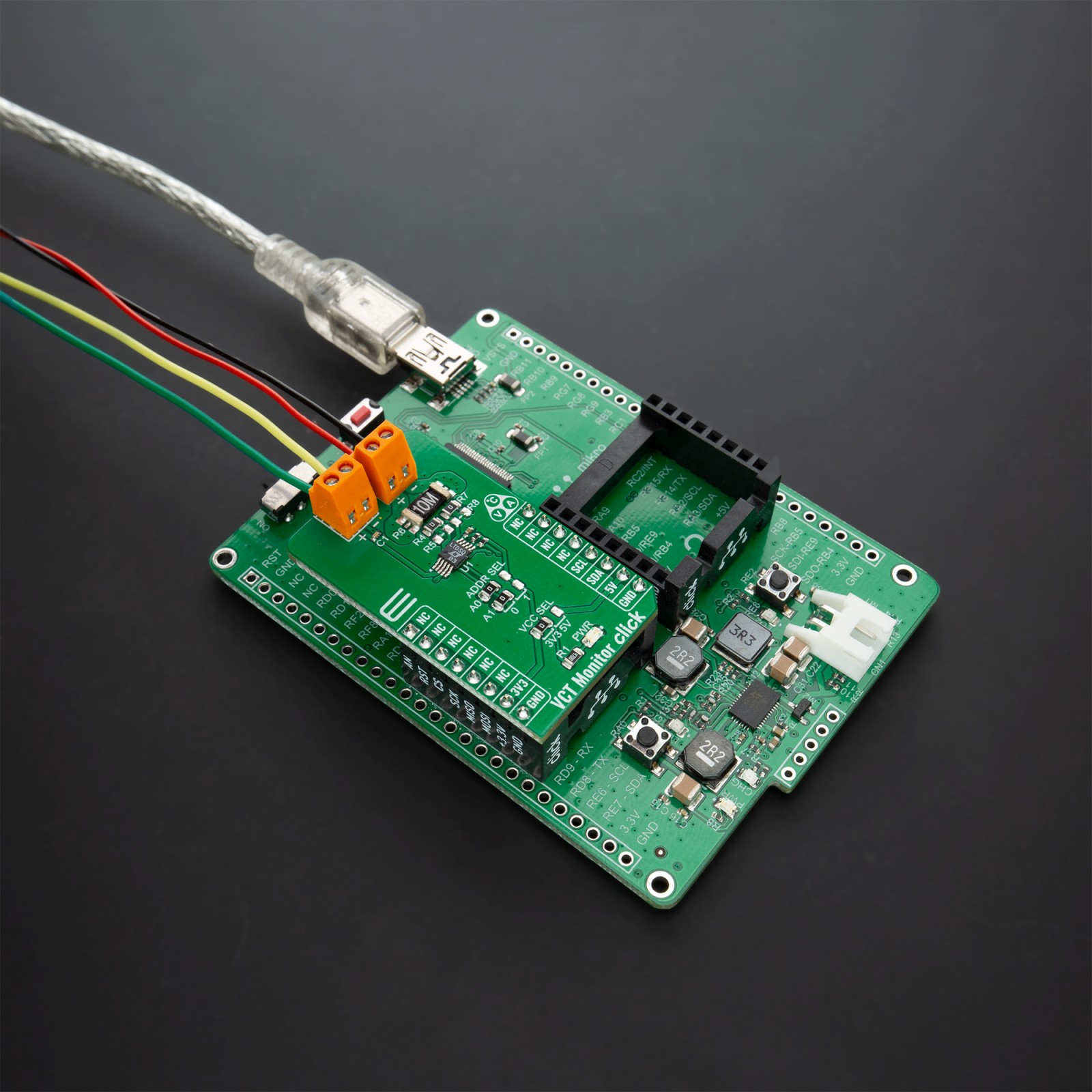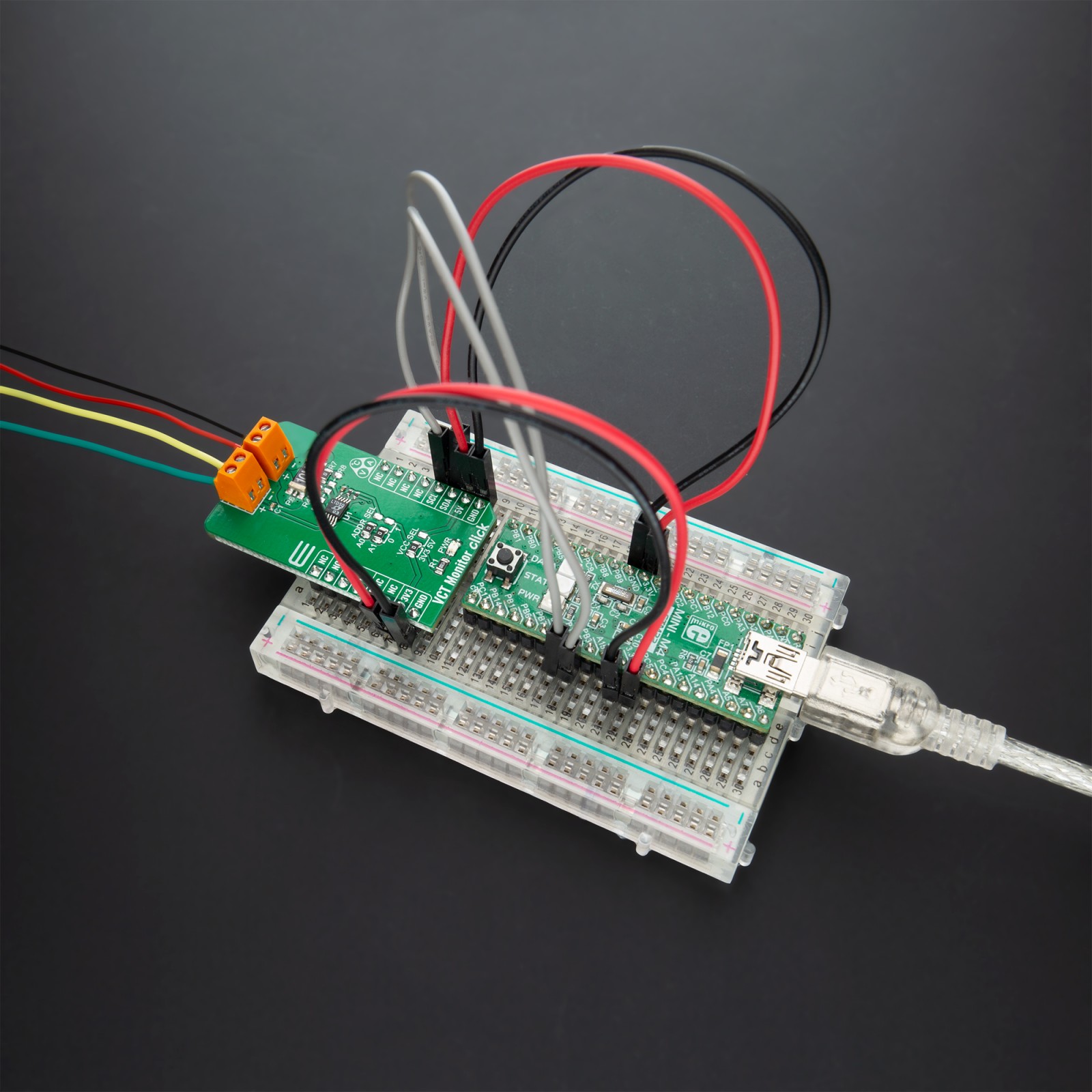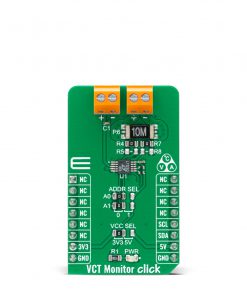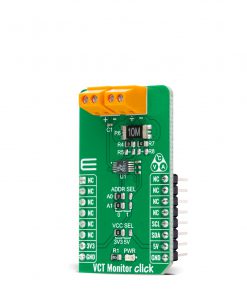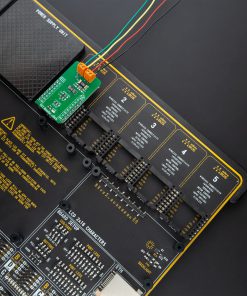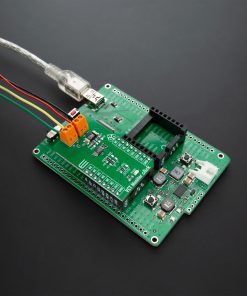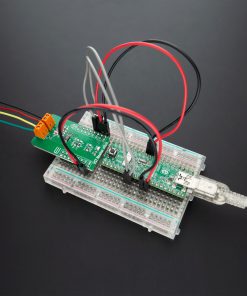VCT Monitor Click
R335.00 ex. VAT
VCT Monitor Click is a compact add-on board that contains a highly integrated monitoring solution without compromising accuracy. This board features the LTC2990, an I2C configurable high-performance temperature, voltage, and current monitor from Analog Devices. The LTC2990 incorporates a 14-bit ADC and a 10ppm/°C voltage reference to provide sub-millivolt voltage resolution, as well as +1°C accuracy internally and +0.5°C accuracy remotely when making temperature measurements. This Click board™ is suitable for applications like supply voltage monitoring and remote diode temperature measurement, e.g., in industrial systems where thermal management is crucial for maximizing performance.
VCT Monitor Click is supported by a mikroSDK compliant library, which includes functions that simplify software development. This Click board™ comes as a fully tested product, ready to be used on a system equipped with the mikroBUS™ socket.
Stock: Lead-time applicable.
| 5+ | R318.25 |
| 10+ | R301.50 |
| 15+ | R284.75 |
| 20+ | R274.03 |


